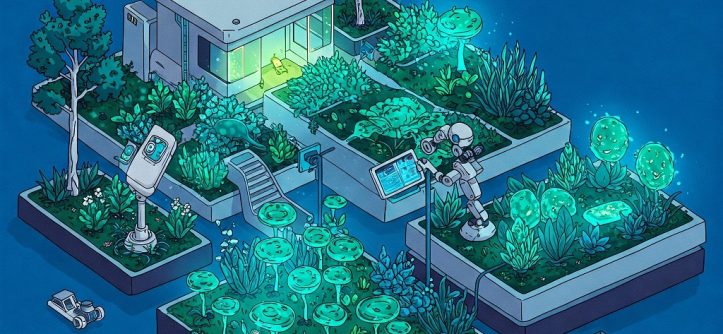Landscaping, an industry long rooted in traditional techniques and manual labor, is on the brink of a technological revolution. The introduction of Artificial Intelligence (AI) and robotics into landscaping practices holds the promise of enhanced efficiency, precision, and creativity. As we stand at the cusp of this innovative era, it’s crucial to explore how these technologies are reshaping the landscape industry and what the future holds.
Revolutionizing Design with AI
Artificial Intelligence is transforming the way designers plan and execute landscaping projects. AI-driven design tools can analyze vast datasets, including soil types, climate conditions, and plant growth patterns, to generate optimal landscape designs. This capability not only saves time but also ensures that the designs are sustainable and tailored to specific environmental conditions.
Moreover, AI algorithms can simulate various scenarios, allowing designers to visualize how landscapes will evolve over time. This predictive modeling helps in making informed decisions regarding plant selection, placement, and maintenance schedules, ultimately leading to more resilient and aesthetically pleasing landscapes.
The Rise of Landscaping Robots
Robotics is another game-changer in the landscaping industry. Autonomous mowers, for instance, are already becoming commonplace, offering a glimpse into how robots can handle routine tasks with precision and consistency. These machines are equipped with sensors and GPS technology, enabling them to navigate complex terrains and avoid obstacles, ensuring a perfectly manicured lawn every time.
Beyond mowing, robots are being developed to handle tasks such as planting, pruning, and irrigation. These robotic assistants are designed to work tirelessly, reducing the physical strain on human workers and allowing them to focus on more intricate and creative aspects of landscaping. As these technologies advance, we can expect to see robots performing more complex tasks, enhancing efficiency and reducing labor costs significantly.
Integrated Smart Systems
One of the most exciting developments in landscaping is the integration of smart systems powered by AI and IoT (Internet of Things). These systems enable seamless communication between various devices and sensors, creating intelligent landscapes that adjust to changing conditions automatically. Smart irrigation systems, for instance, can monitor soil moisture levels and weather forecasts to optimize water usage, promoting sustainability and reducing waste.
Additionally, these smart systems can provide real-time data and insights, allowing property owners to monitor the health of their landscapes remotely. This proactive approach to maintenance ensures that potential issues are addressed promptly, enhancing the longevity and beauty of the landscape.
Challenges and Opportunities
While the integration of AI and robotics in landscaping presents numerous benefits, it also poses challenges. The initial cost of implementing these technologies can be substantial, potentially deterring smaller businesses from adoption. However, as technology advances and becomes more accessible, these costs are expected to decrease, making it feasible for a broader range of landscapers.
Furthermore, there is a learning curve associated with adopting new technologies. Landscapers must be trained to understand and operate AI-driven tools and robots effectively. This shift in skills presents an opportunity for educational institutions and training programs to develop curricula that support the evolving needs of the industry.
Conclusion
The future of landscaping is undeniably intertwined with AI and robotics. These technologies are set to revolutionize the industry, offering innovative solutions to age-old challenges and paving the way for more sustainable and efficient practices. As we embrace this technological transformation, the phrase landscaping near me will increasingly come to represent a seamless blend of tradition and innovation.
With careful planning and strategic implementation, the integration of AI and robotics in landscaping promises to create environments that are not only beautiful but also adaptive and resilient, enhancing the quality of life for communities around the world.





Leave a Reply